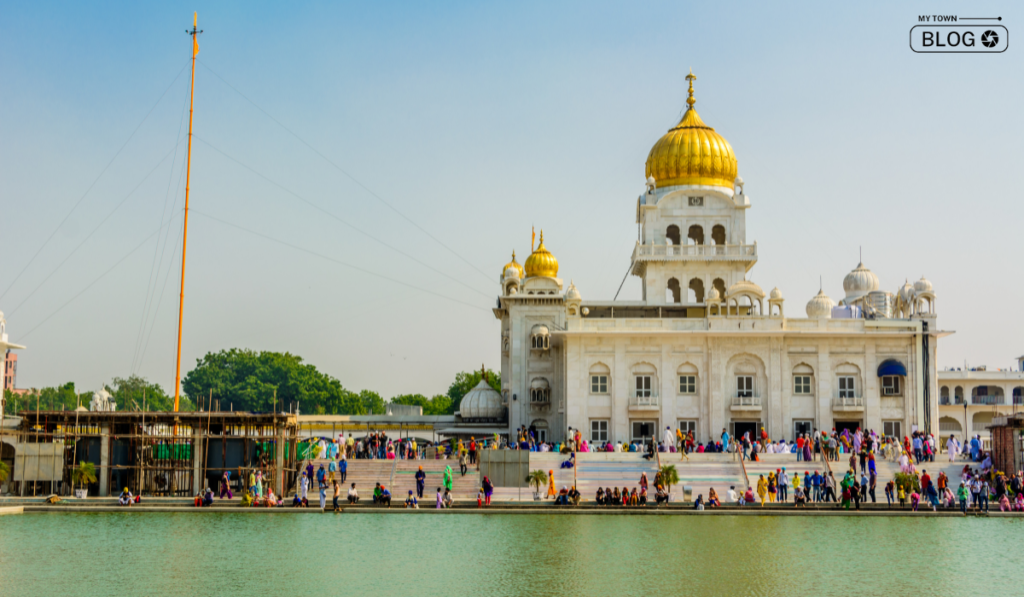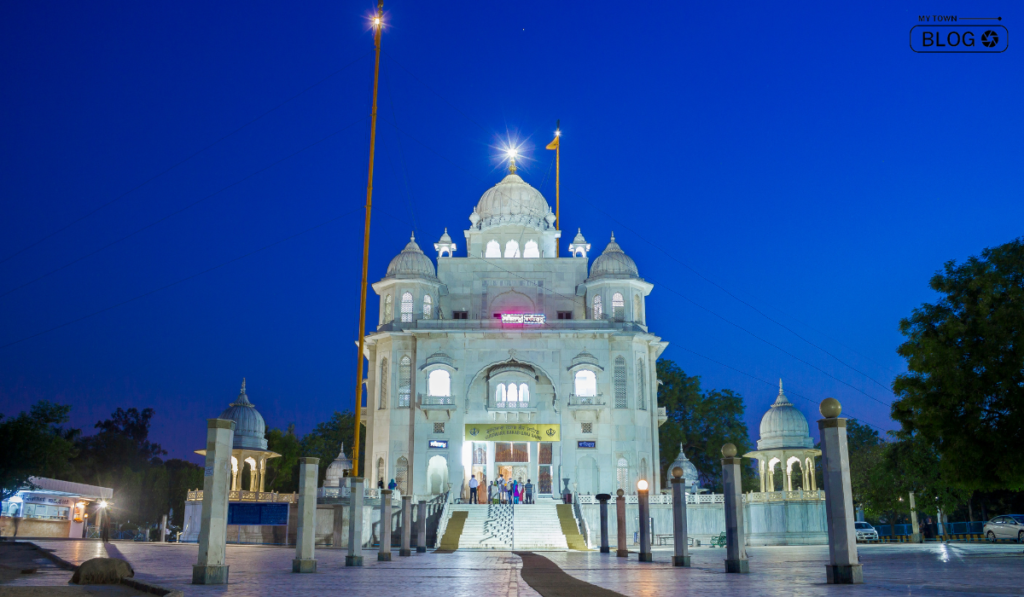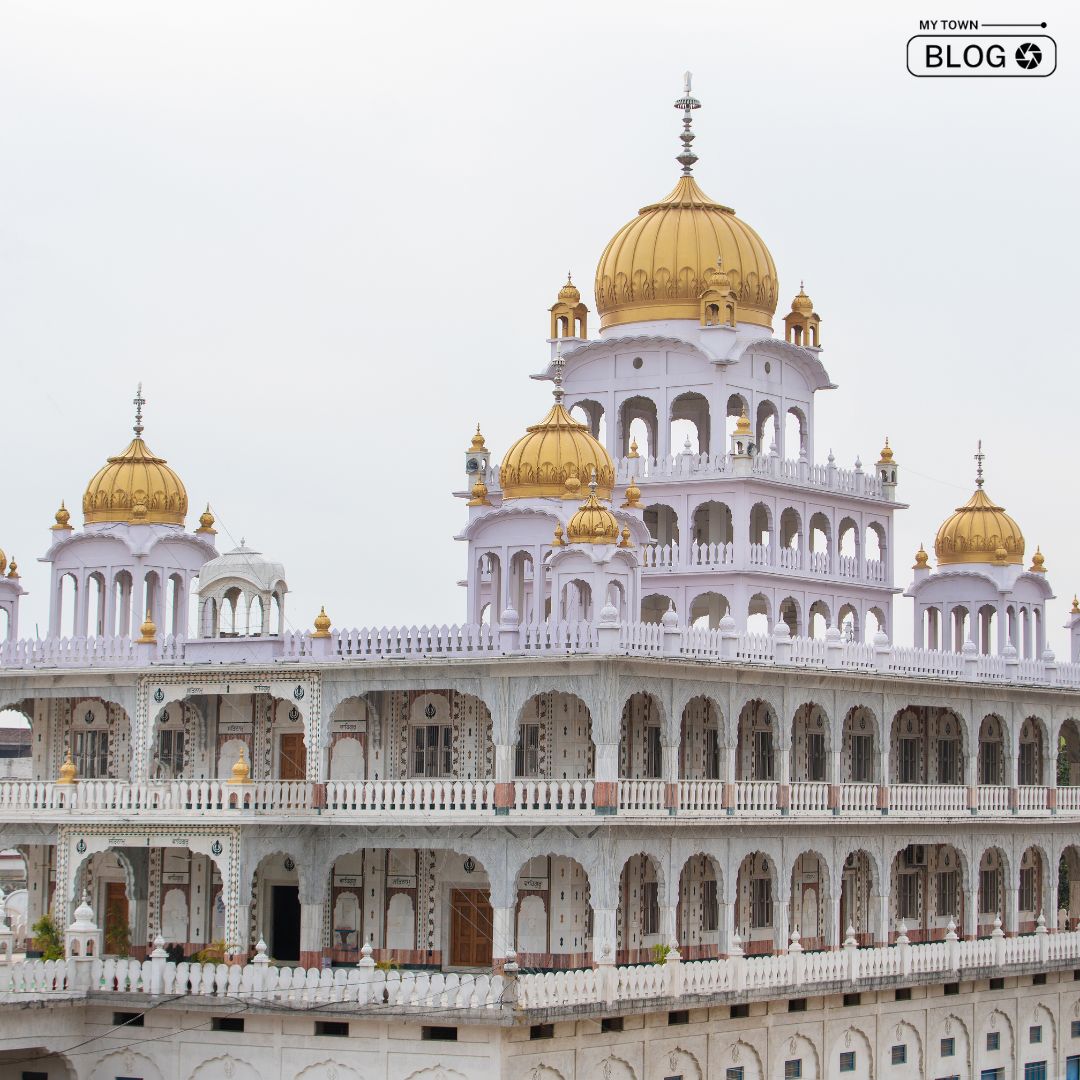Gurudwaras, the holy Sikh shrines, hold a significant place in the heart of Sikhism’s spiritual and cultural heritage. In Delhi, the capital city of India, there are several historic Gurudwaras that stand as a testament to the rich history and values of Sikhism. Let’s embark on a journey to discover the top historic Gurudwaras in Delhi, each with its own unique stories and significance.
Gurudwara Sri Bangla Sahib

Gurudwara Sri Bangla Sahib stands as a radiant gem in the heart of Delhi. Its awe-inspiring golden dome and a tranquil Sarovar create a serene atmosphere that captivates both devotees and visitors. The Gurudwara holds a special place in Sikh history due to its association with Guru Harkrishan Sahib, the eighth Sikh Guru.
During the smallpox and cholera epidemics, Guru Harkrishan Sahib selflessly served the afflicted, exemplifying the spirit of compassion and selflessness. The Langar, a community meal, continues to be served here, embodying the Sikh principle of equality and service.
- Location: Hanuman Road Area, Connaught Place, New Delhi, Delhi, 110001
Gurudwara Sis Ganj Sahib
Gurudwara Sis Ganj Sahib stands as a living testament to the valour and sacrifice of Guru Tegh Bahadur, the ninth Sikh Guru. Situated near the historic Chandni Chowk area, this Gurudwara was built on the site where Guru Tegh Bahadur Ji was martyred for upholding the right to freedom of religion. The Gurudwara’s architecture and ambiance evoke a sense of reverence, reminding visitors of Guru Tegh Bahadur’s unwavering dedication to his principles.
- Location: Chandni Chowk Road, Maliwara, Chatta Pratap, Chandni Chowk, New Delhi, Delhi, 110006
Gurudwara Majnu Ka Tilla
Nestled along the banks of the Yamuna River, Gurudwara Majnu Ka Tilla weaves together Sikh and Tibetan influences, creating a unique cultural experience. It commemorates the meeting of Guru Nanak Dev Ji and Majnu, a Sufi mystic. The Gurudwara’s location within a Tibetan refugee settlement adds to its distinctive charm. It’s a place where different cultures converge, echoing Guru Nanak Dev Ji’s message of unity and understanding.
- Location: New Chandrawal, Civil Lines, Delhi, 110054
Gurudwara Baba Banda Singh Bahadur
Gurudwara Baba Banda Singh Bahadur pays tribute to the indomitable spirit of Baba Banda Singh Bahadur, a warrior who fearlessly fought against oppression. This Gurudwara marks the spot where he gathered his forces before embarking on a campaign against the Mughal forces. The Gurudwara’s significance lies in its connection to the valour and determination of Baba Banda Singh Bahadur.
- Location: Mehrauli Village, Mehrauli, New Delhi, Delhi, 110016
Gurudwara Mata Sundri Ji
Gurudwara Mata Sundri Ji honors the pivotal role played by Mata Sundri Ji, the wife of Guru Gobind Singh Ji. Her dedication to preserving and propagating Sikh teachings led to the establishment of the Gurudwara. It houses a museum that offers insights into the lives and teachings of the Sikh Gurus. The Gurudwara is a treasure trove of history, inviting visitors to delve into the past.
- Location: Mata Sundri Women’s College, Mandi House, New Delhi, Delhi, 110002
Gurudwara Shree Bala Sahib Ji
Gurudwara Bala Sahib stands as a testimony to the compassion of Guru Har Krishan Ji, the eighth Sikh Guru. This Gurudwara marks the site where Guru Har Krishan Ji stayed during his visit to Delhi. His selfless acts of healing the sick and helping the needy are etched into the walls of this sacred place.
- Location: Bhagwan Nagar Chowk, Gurudwara Road, Hari Nagar Ashram, New Delhi, Delhi 110014
Gurudwara Nanak Piao Sahib
Gurudwara Nanak Piao Sahib brings to life the visit of Guru Nanak Dev Ji to Delhi. Legend has it that Guru Nanak Dev Ji set up a camp here, offering food and water to travellers. The “Piao,” a well he dug, still quenches the spiritual thirst of devotees and visitors. The Gurudwara preserves the memory of Guru Nanak Dev Ji’s teachings and his connection with the city.
- Location: GT Karnal Road, Sultan Puri, Kirpal Bagh, Rana Pratap Bagh, Gujranwala Town, Delhi, 110009
Gurudwara Moti Bagh Sahib
Gurudwara Moti Bagh Sahib holds historical significance as the resting place of Guru Gobind Singh Ji during his journey to the South. It encapsulates the Guru’s message of courage and righteousness. The Gurudwara’s peaceful ambiance and its connection to Guru Gobind Singh Ji make it a serene place of reflection.
- Location: Durgabai Deshmukh Metro station, Nanakpura Road, Near Dhaula Kuan, Moti Gaon, South Moti Bagh, New Delhi, Delhi, 110032
Gurudwara Damdama Sahib
In the midst of Delhi’s bustling streets, Gurudwara Damdama Sahib offers a sanctuary of peace. Guru Gobind Singh Ji rested here during his escape from Mughal forces. The Gurudwara’s tranquil environment and historical importance create a harmonious blend, allowing visitors to connect with Sikh history amidst the urban chaos.
- Location: Bharat Scouts and Guides Marg, Nizamuddin, Nizamuddin East, New Delhi, Delhi, 110013
Gurudwara Rakab Ganj Sahib

Gurudwara Rakab Ganj Sahib stands as a symbol of perseverance and devotion. Guru Tegh Bahadur Ji’s followers secretly cremated his body here after his execution. Despite the risk, they ensured his last rites were performed respectfully. The Gurudwara stands as a tribute to their determination and unwavering faith.
- Location: Guru Gobind Singh Bhawan, Pandit Pant Marg, New Delhi, Delhi, 110001
Conclusion
Exploring the top historic Gurudwaras in Delhi is a journey through time, culture, and spirituality. Each Gurudwara carries stories of sacrifice, courage, and compassion that continue to inspire generations. These places not only hold religious significance but also provide insights into the rich tapestry of India’s history. From the majestic dome of Gurudwara Sri Bangla Sahib to the serene waters of Gurudwara Nanak Piao Sahib, each site invites visitors to connect with the values that define Sikhism.
FAQs
How do I reach the Sis Ganj Sahib Gurudwara?
Sis Ganj Sahib Gurudwara is conveniently located in Chandni Chowk, Old Delhi, easily accessible by metro, rickshaw, or car.
Can visitors participate in Langar (community meals) at these Gurudwaras?
Absolutely, all visitors are welcome to partake in the Langar, a humble community meal that symbolises equality and sharing.
Are these Gurudwaras open to people of all religions?
Yes, these top historic Gurudwaras in delhi warmly welcome people of all religions, fostering an environment of inclusivity.
How can I learn more about the history and culture of these Gurudwaras during my visit?
Most Gurudwaras have informative panels, guides, and museums that offer insights into their history and cultural significance.
Are there any specific dress codes or etiquette rules to follow while visiting these Gurudwaras?
It’s recommended to dress modestly and cover your head with a scarf or turban as a sign of respect while inside the Gurudwara premises.
Can I take photographs inside these Gurudwaras?
Photography is generally allowed in most areas, but it’s essential to be respectful and avoid disrupting the peaceful atmosphere.
Are there any specific rituals or ceremonies that take place at these Gurudwaras?
Gurudwaras hold regular prayer services and ceremonies. The most important is the recitation of Guru Granth Sahib, the holy scripture.
Is there a particular time when these Gurudwaras are less crowded for a more peaceful visit?
Weekdays and early mornings are generally less crowded, providing a serene environment for a peaceful visit and personal reflection.
Are there any historical places in Delhi to visit besides the historic Gurudwaras?
Delhi is replete with historical landmarks beyond the historic Gurudwaras. These sites offer a glimpse into the city’s rich past and cultural heritage.








